A Mating Pair Of Tyviit Harass A Pair Of Bjommri, While A Frandir Fox Picks Parasitic Crabs, Unbothered


a mating pair of tyviit harass a pair of bjommri, while a frandir fox picks parasitic crabs, unbothered
species info under the cut (its long lol)
these creatures are native to the ursval islands, a northern region dominated by temperate rainforest and rocky coastlines.
tyviit are part of a family of flightless sea pterosauroids that can be found almost worldwide (though are concentrated in northern latitudes). they occupy a similar niche to penguins, but are far quicker on land and capable of a (somewhat awkward) quadrupedal gait, and can be found far inland and even in fresh water. they congregate in large colonies, nesting near the treeline. they feed almost exclusively on fish, and are extensively hunted by bjommri while out at sea.
this clade is unique among pterosauroids, both for their flightlessness and for the density of their pyncofiber (hair). this incredibly dense coat works alongside a layer of blubber to keep them warm in cool seas.
bjommri and frandir are both part of a small clade of marine mammals exclusively found in northern latitudes. while their exact classification is uncertain, they are believed to derive from early canids who found niches in cool coastal areas. the two are distant cousins, with frandir representing the basal form of this group.
bjommri are large predators, with the biggest individuals weighing in at around 2000 lbs. their (and others of their clade) method of propulsion is unique among marine mammals, bearing more similarity to polycotylid plesiosaurs than the seals they resemble. however, they still haul onto land to rest and breed, where they are slow to the point that their prey can quite easily walk among them.
also unlike seals, they are almost strictly monogamous, forming close-knit pair bonds that can last a lifetime. their fur coloration and spotting is unique to each individual and assists in recognition. while these pairs are generally mates, they may also be siblings or an unrelated same-sex bond, in which case they will mate with other pairs or unattached bachelors. these pairs will coordinate hunts, sometimes even taking down small beaked whales, but mostly consume fish, squid, seabirds, tyviit, and seals.
the frandir fox (or just frandir) (not actually a fox) are opportunistic omnivores, eating fish, mollusks, kelp, seabirds, eggs, berries, and occasionally congregating in loose packs to hunt small seals or young ungulates (though they are typically solitary). they also feed on the parasitic crabs that plague the bjommri, and in turn are tolerated and receive a degree of protection from the bigger beasts. their similar coat colors and close interaction earns them their name, which roughly translates to 'little cousin'.
the parasitic crabs here have no specific name, but are colloquially referred to as 'sea ticks'. they are opportunistic parasites, feeding predominantly on the blood of semi-aquatic mammals but also sometimes stealing bites from their host's prey. they are removed from bjommri via social grooming, but their small size, flat shells, and tight grasp make this a difficult task for such a large animal. the delicate teeth of the frandir fox are better suited to this task.
More Posts from Rhincodon-cynocephalus and Others

Quagga Foal
This young female Quagga foal only lived one week after capture in 1857, it now sits in the South African Museum as a mount.
me every few minutes

Finally, I’m revealing my entries for this year’s @swimonzine Swim On 8: Offshore! I was pleased to read the notifications about how many participated and donated through purchasing this beautiful zine.
Time for the reveal:
THE BLUNTNOSE SIXGILL SHARK It is a stout shark with six gill slits who (surprise surprise!) has a short blunt nose. This shark is also sluggish, but a very strong swimmer. It is capable of boosting its speed for stalking and catching prey using its powerful tail. Its favourite meals are: fish, rays and squids. Despite its massive size, this species is rather hamless to humans, unless provoked. Unfortunately, not only endangered because it is often bycatch, but also because its popularity as a sport fish has depleted these beautiful creatures in many areas.
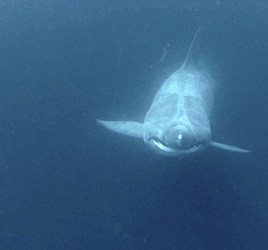
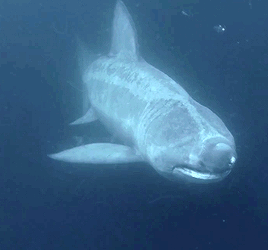
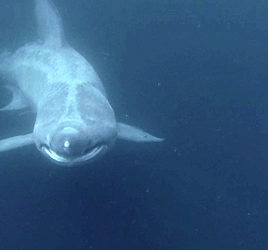
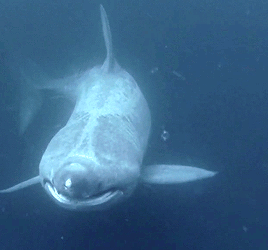
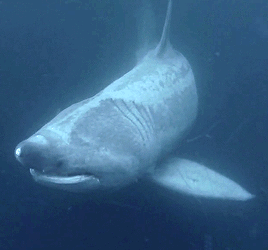
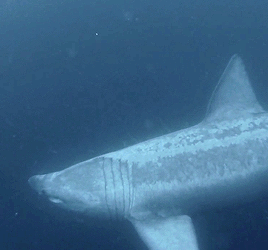
Rare sighting of basking shark in deeper water with its mouth closed.
C O R N




~ Perra con Mazorca entre los Dientes. (Dog with cob in her teeth)
Culture: Tumbas de tiro
Style: Comala
Place of origin: Colima
Period: Late Preclassic-Early Classic
Date: 300 B.C.- A.D. 600
Medium: Modeled, incised and burnished clay.

He's got special hair ladies. Somehow, they figured out how to tame his hair a bit.
Sets also catching up on the current gossip. Gotta know what those dang birds have been up too....
any cute nurse shark or whale shark facts?
yes and hiii! thanks for the ask <3
nurse sharks first,
- they spend most of their time laying around reefs or underwater, cuddling together in groups or 2 to 40 (which is how they got their title of laziest shark, but i think its cute)

- younger nurse sharks can change color depending on how much sunlight they’ve been exposed to. pups that were kept in the sun and moved to the shade changed from a dark to light coloration within minutes.


- some nurse shark pups have polka dots!
- they can be trained (using positive reinforcement) to pick up hoops and bring them back to trainers, similarly to dolphins
- their known as the “couch potato of the shark world”
- they have two little knobs on their face called barbels, which contain taste buds that they drag across the ocean floor to find prey

and, not a fact but here’s a picture of the rare dalmatian nurse shark!

and onto whale sharks!
- whale sharks are referred to as “gentle giants”
- they can live up to 150 years
- they may be the world’s biggest fish, but their swimming speed is only 3mph
- whale sharks are filter feeders, which means they can’t bite or chew
- every whale shark has a completely unique pattern, just like fingerprints

hope you enjoyed them!!!!





Halloween art piece:)
Enjoy
Also if you understand the tombstones, kudos!!!!
Pandemic, war, and ecological collapse are on my mind.

Ballpoint on heavy paper.

About Fish: A Guide for Children, written by Cathryn Sill and illustrated by John Sill, 2005.
-
 ouppygirlcity reblogged this · 2 months ago
ouppygirlcity reblogged this · 2 months ago -
 haveacraigday liked this · 2 months ago
haveacraigday liked this · 2 months ago -
 laevis2202 liked this · 3 months ago
laevis2202 liked this · 3 months ago -
 bluebrey liked this · 4 months ago
bluebrey liked this · 4 months ago -
 neolithic-bear-woman liked this · 4 months ago
neolithic-bear-woman liked this · 4 months ago -
 cornfield-doe liked this · 8 months ago
cornfield-doe liked this · 8 months ago -
 kale35 liked this · 9 months ago
kale35 liked this · 9 months ago -
 ademandsteveisgod reblogged this · 1 year ago
ademandsteveisgod reblogged this · 1 year ago -
 musteredbragon liked this · 1 year ago
musteredbragon liked this · 1 year ago -
 cuttlegrem liked this · 1 year ago
cuttlegrem liked this · 1 year ago -
 kid-az liked this · 1 year ago
kid-az liked this · 1 year ago -
 hregos liked this · 2 years ago
hregos liked this · 2 years ago -
 aliencircus liked this · 2 years ago
aliencircus liked this · 2 years ago -
 jinklejimmy liked this · 2 years ago
jinklejimmy liked this · 2 years ago -
 meatrealm liked this · 2 years ago
meatrealm liked this · 2 years ago -
 viic-chan liked this · 2 years ago
viic-chan liked this · 2 years ago -
 theoneandonlyvoid liked this · 2 years ago
theoneandonlyvoid liked this · 2 years ago -
 dangerousgladiatorninja liked this · 2 years ago
dangerousgladiatorninja liked this · 2 years ago -
 blueguydraws reblogged this · 2 years ago
blueguydraws reblogged this · 2 years ago -
 jaybird2240 liked this · 2 years ago
jaybird2240 liked this · 2 years ago -
 siyuki1234 reblogged this · 2 years ago
siyuki1234 reblogged this · 2 years ago -
 hedgepaw liked this · 2 years ago
hedgepaw liked this · 2 years ago -
 boxheadpaint liked this · 2 years ago
boxheadpaint liked this · 2 years ago -
 allbrotnar liked this · 2 years ago
allbrotnar liked this · 2 years ago -
 cosmiclattetigeress reblogged this · 2 years ago
cosmiclattetigeress reblogged this · 2 years ago -
 cosmiclattetigeress liked this · 2 years ago
cosmiclattetigeress liked this · 2 years ago -
 cran-b-art liked this · 2 years ago
cran-b-art liked this · 2 years ago -
 bluebrine liked this · 2 years ago
bluebrine liked this · 2 years ago -
 trashyeviloverlord liked this · 2 years ago
trashyeviloverlord liked this · 2 years ago -
 collapsiblebrain reblogged this · 2 years ago
collapsiblebrain reblogged this · 2 years ago -
 mixotrophics reblogged this · 2 years ago
mixotrophics reblogged this · 2 years ago -
 manedskull reblogged this · 2 years ago
manedskull reblogged this · 2 years ago -
 manedskull liked this · 2 years ago
manedskull liked this · 2 years ago -
 drawingsphopho liked this · 2 years ago
drawingsphopho liked this · 2 years ago -
 glarnboudin reblogged this · 2 years ago
glarnboudin reblogged this · 2 years ago -
 jugofraga liked this · 2 years ago
jugofraga liked this · 2 years ago -
 neiratina liked this · 2 years ago
neiratina liked this · 2 years ago -
 the-creature-verse liked this · 2 years ago
the-creature-verse liked this · 2 years ago -
 sagebrush06 liked this · 2 years ago
sagebrush06 liked this · 2 years ago -
 kt--extinction reblogged this · 2 years ago
kt--extinction reblogged this · 2 years ago -
 kt--extinction liked this · 2 years ago
kt--extinction liked this · 2 years ago -
 cerothenull reblogged this · 2 years ago
cerothenull reblogged this · 2 years ago -
 anymoretastelessdemands reblogged this · 2 years ago
anymoretastelessdemands reblogged this · 2 years ago -
 anytastelessdemands liked this · 2 years ago
anytastelessdemands liked this · 2 years ago -
 carthus-flame-arc reblogged this · 2 years ago
carthus-flame-arc reblogged this · 2 years ago -
 apocritast liked this · 2 years ago
apocritast liked this · 2 years ago -
 spottedalienmonster liked this · 2 years ago
spottedalienmonster liked this · 2 years ago -
 godzillareader liked this · 2 years ago
godzillareader liked this · 2 years ago -
 feycorvus liked this · 2 years ago
feycorvus liked this · 2 years ago -
 cinders-in-tow liked this · 2 years ago
cinders-in-tow liked this · 2 years ago

Thylacine archive blog: @moonlight-wolf-archive
204 posts